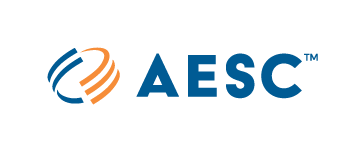Alternative Energy Systems Consulting, Inc.
Market Access Program Portal
Program Information, Tools, and Resources for Aggregators
Program Information
What is the Market Access Program (MAP)?
PG&E’s Market Access Program (MAP) is an innovative program that funds incremental energy efficiency and peak load reduction projects to mitigate the risk of capacity shortages in the summers of 2022 and 2023. PG&E designed MAP in response to the CPUC’s direction in their December 8, 2021 Decision (D.) 21-12-011 called “Energy Efficiency Actions to Enhance Summer 2022 and 2023 Electric Reliability”. AESC is a Lead Implementer that implements MAP on behalf of PG&E and is responsible for aggregator recruitment, technical support, incentive commitment, project M&V, and aggregator incentive payment.

What are the Benefits of MAP?
Streamlined Program Design
Because MAP measures savings and pays incentives based on actualized grid impacts from projects (measured through standardized Population-based NMEC methodologies), the program can streamline administrative and participant processes, reduce overhead and transaction costs, and accelerate project review and delivery timelines and grid impacts.
Expanded Project Eligibility
MAP offers expansive project eligibility, and most projects that can measurably reduce existing building loads on the grid can qualify. This includes current measures, expired measures, and emerging technologies and retrofit and behavioral, retrocommissioning, or operational (BRO) interventions. Once enrolled, aggregators can work with AESC to evaluate potential sites, projects, and estimated incentives. Example projects include:
- Efficiency Measures: Lighting, HVAC, water heating, building envelope, refrigeration, and controls-based technologies.
- Load Control measures: Measures that permanently reduce or shift peak and net demand are eligible if they provide energy savings or are bundled with an energy efficiency project.
Higher Incentives
MAP incentives can be significantly higher than those in traditional EE programs, especially for savings delivered from 4-7 PM (“gross peak”) and 7-9 PM (“net peak”), June to September. As a result, previously stranded opportunities can become viable under MAP.
How are Incentives Calculated in MAP?
Program incentives are correlated to the program adjusted Total System Benefit (pTSB) of a project or project population – a measure of the value of hourly avoided costs multiplied by the Effective Useful Life of installed measures. For simplification purposes, the program uses a modified adjusted avoided cost calculator to drive program objectives around summer peak load reduction.
AESC will post a Value Estimator Tool and provide technical support to help enrolled aggregators calculate and validate estimated project incentives based on load shape, climate zone and EUL. Final project incentives will be paid to aggregators quarterly, for a year following project installation, based on hourly energy savings delivered measured through Population-based NMEC methodologies.
Incentives range widely based on a project’s load shape savings and measure EUL – from a low of ~$0.03/kWh for off-peak savings from a 1-year EUL, to a high of ~$3.42/kWh for Net Peak savings (7-9 PM) with a 20-year EUL.

When averaged over the 8760 hours of a year, that translates into an average ~$0.05/kWh for 1-year EUL measures, to ~$0.97/kWh for 20-year EULs.

Aggregators
What Defines an Aggregator?
Aggregators are project developers who can identify and deliver projects and grid impacts for the MAP program. Enrolled aggregators will receive MAP incentives directly and have latitude to utilize a wide variety of business models to finance and actualize grid impacts at customer sites. Aggregators have turn-key responsibility for customer recruitment, project identification, all end-customer interactions, project design and implementation, energy savings and complying with project and program requirements. Aggregators can be existing third-party program implementers for PG&E but should focus on recruiting projects that were not eligible, viable or already committed under existing third-party programs.

View the current list of MAP aggregators.
Sign Up
How Do I Sign Up as an Aggregator?
Aggregators can either sign a Participating Aggregator Agreements (PAA) or can subcontract directly to AESC, if eligible and approved, to take advantage of additional customer targeting support. Aggregators must agree to adhere to program terms and conditions, and Subcontracted Aggregators must also agree to AESC’s contract flow-down provisions. Once enrolled through either path, aggregators can work directly with AESC to target, evaluate, and enroll projects and commit MAP incentives.

Docs
Become an Aggregator
This energy efficiency program is funded by California utility customers and administered through PG&E under the auspices of the California Public Utilities Commission. The program is implemented and managed by Alternative Energy Systems Consulting, Inc. and their authorized representatives. “PG&E” is a registered trademark of PG&E Corporation. PG&E is not responsible for any other content, names or marks in these program materials.

